Pure Bliss
What areas in our everyday lives have changed fundamentally in times of pandemic? This year's Easter exhibition Pure Bliss addresses this question through contemporary paintings, installation and sculpture.
In times when we speak of system-relevant renunciation, we are all used to consuming art primarily in the digital space. The group exhibition Pure Bliss is intended to make us want to approach analog gallery visits again as well. The exhibition is divided into six, partially overlapping areas: the coffee house visits, our work areas, sociability and social interaction, sports and fitness, love and dating, and travel. Based on the central figure group Running People (2020), by the international art star Julian Opie, HAAS & GSCHWANDTNER Gallery presents current works by emerging as well as established artists who have dealt with themes.
Contemporary British artist Julian Opie is known for his style of transforming elements from pop art, graphic art and minimalism into his very own artistic language. The sculpture group Running People shows outlines of figures, represented by thick and colorful lines. Opie’s figures hurry figuratively through the streets, they are businessmen, joggers or people hurrying to their appointments. They represent densely packed crowds of people that have completely disappeared from our everyday perception in the past year.
Also new to the gallery program are three up-and-coming young Salzburg artists: Magdalena Heller, Kathrin Isabell Rhomberg and Zoe Vitzthum. In the group exhibition, the three female artists present paintings and sculpture that refer to freedoms that are now, after all, already unusual.
The large-scale oil painting Freedom (2017) by Magdalena Heller shows two teenagers secretly “hanging out” in the dark. The words “Freedom” can be read below them. The artist deals with subcultures, depicts moments from the lives of rebels, hangers-on and outsiders.
In her installation Picknick 1 + 2 (2021), Zoe Vitzthum thematizes, among other things, the coffee house visit that is typical in Salzburg. For this, she poured countless pieces of cake from the Salzburg coffee house Fingerlos. The sweet temptations melted during the work process, their lost forms are reproduced in ceramic. They are presented on picnic tables made of plaster, more or less as relics of days gone by. The installation Coffee Machine 1-3 (2021), connects the artist with many visits to her parents. The homey feeling in the kitchen, the hissing and humming of the coffee machine and the dripping sound of the coffee running into the cup. These are all emotions and perceptions that are realized in the object group. The visits to the parents, too, have changed fundamentally as a result of the pandemic.
The gallery’s third new discovery is Kathrin Isabell Rhomberg, who was also recently nominated for the STRABAG Artaward 2021. In her sensual paintings, everything ultimately revolves around the experience of the world. Our real spaces of experience have just been massively reduced by the pandemic; home offices, quarantine and isolation have significantly reduced our mobility, but also our sensory stimuli and impressions. In her paintings, some of which are large-scale, she creates pictorial spaces of experience.
In her large-format drawing Busch (2020), Tina Graf shows how the working and studio situations for artists have also changed. Here the view opens onto the balcony of the artist, who now lives and works in Vienna. During the lockdowns, it was not possible for many artists to visit graphic print studios or collaborative studios. The workspace was thus moved into the private sphere, often into small apartments.
Another theme of the exhibition is traveling. With the artist’s book A Cyclist’s Alphabet Tina Graf, tells the story of her 2020 bicycle journey, which was originally supposed to take her to the Asian side of Istanbul. Due to travel restrictions caused by Covid-19, she rode once around Austria and discovered new freedoms, places and locations that she probably would never have known without the restrictions of the pandemic.
Untitled I, from the series Walls. Interrupted (2020) by Viennese artist Birgit Graschopf, was taken shortly before the first Lockdown 2020, and is the last non-European trip the artist was able to make for her research. The photograph, exposed on concrete, shows an abandoned parking garage in Bangkok, Thailand, which was not completed after the economic crisis in 1997. Graschopf stages herself in this lost architecture. A new element in her work is the cholorization of it. The transition from civilization to nature is made clear by the light greenish shimmer.
Julian Khol also points to the longing of travel in the large-scale oil pastel drawing bow (2020). The palm tree is his manifested memory of an artist residency in Los Angeles, USA in 2018 and one in Miami, USA in 2019. As a student with Christian Ludwig Attersee and Herbert Brandl, he always wanted to reinvent himself. No painting should look like the other, shapes and colors had to change constantly. The palm tree in his drawings is a variable motif. The repetition becomes a pleasant rhythm, like a song in which certain sequences of notes are repeated as well.
Pleasure is a defining element in the paintings of German artist Heiner Meyer. The round oil paintings on wood, from the series BIG SAVER (2015) represent oversized donuts. They complement, together with the early work Bakery Hommage to Thiebaud (1984) the area of coffee house visits so typical in Salzburg.
Love, dating, and sensual seduction have likewise shifted into digital space. Objects made of ceramics and porcelain from Barbara Reisinger’s series Die Büchse der Pandora (Pandora’s Box, 2006/07) show scenes from erotic Internet films, while the rare lithograph Miss Kiss (2012) by the late US Pop-Art artist Mel Ramos evokes forbidden erotic encounters.
Sports and physical activities in gyms have also changed fundamentally or no longer take place. We are allowed sporting activities, such as jogging or walking or even yoga in our private spaces. David Meran, who created his sculpture group Untitled (but solid and smooth) Yoga Mats (2019) before the pandemic, combines the material with concrete. Rolled and folded, the common sporting items are reminiscent of ancient stelae, symbols of past shared fitness activities. The artifacts also point to Meran’s socio-critical content, in which he also raises the question of the material’s origin. The majority is produced in China and consists of 100 percent petroleum, a material that is no longer degradable. Yoga has become one of the standard wellness activities in our society, promising everyone to free them from illness and trouble and make them happy.
Biographie
Tina Graf
*1997 in Taitung, Taiwan, lives and works in Vienna, AT
Tina Graf completed her studies in Fine Arts and Design at the Mozarteum University, Salzburg in 2019. Since fall 2019 she is studying graphic arts and printmaking at the University of Applied Arts, Vienna by Jan Svenungsson. The human being is the focus of her prints, but also large-format paintings, as well as social friction and women’s roles in everyday life.
Birgit Graschopf
*1978 in Vienna, AT, lives and works in Vienna, AT
Birgit Graschopf graduated in photography from the Academy of Applied Arts in Vienna. In her works she combines the medium of photography with aspects of drawing and the stylistic device of perforation. People and bodies are depicted in narrative strands in both recent perforations and early drawings on Japanese rice paper. Graschopf’s works can be found in Austrian museums, including the Albertina in Vienna, as well as numerous private collections in Austria and abroad.
Magdalena Heller
*1993 in Mondsee, AT, lives and works in Salzburg, AT
Magdalena Heller’s work is located at the intersection of contemporary painting, artistic photography and video art as well as self-dramatization. In her artistic work she deals with young women and their possibilities and limits in our patriarchal society. Escapes from reality and virtual worlds always play a major role, as do social politics and current political upheavals.
Julian Khol
*1979 in Vienna, AT, lives and works in Cologne, DE, and Vienna, AT
Julian Khol began his career as a painter more than 15 years ago at the University of Applied Arts in Vienna with Christian Ludwig Attersee. In 2009, he moved to Herbert Brandl’s master class at the Düsseldorf Art Academy. In his expressive, figurative formal language, he is influenced by the Viennese School of a Schiele, or Hrdlicka, among others, as well as by the America of the 1950s. His painterly works oscillate between figuration and abstraction and have recently been increasingly translated and further developed by Khol into the three-dimensional. Thus, step by step, an oeuvre emerged that harbors an evolution – from abstract painting to powerful larger-than-life sculpture.
David Meran
*1991 in Kirchdorf an der Krems, AT, lives and works in Vienna, AT
He studied at the University of Applied Arts in Vienna, AT, and at Geidai – Tokyo University of the Arts in Japan.
David Meran’s artistic work explores the fragility, the tenseness, the balance the contradiction of reality constructions and social agreements. The artist translates social codes and conventions into sculptures made of unconventional materials that represent aesthetic couplings or ruptures. An ironic change of perspective is asserted through a future-oriented point of view, as well as institutional criticism of the concept of art and culture itself.
Heiner Meyer
*1953 in Bielefeld, DE, lives and works in Bielefeld, DE.
Consistency and undogmatic uncompromisingness characterize the painting of Heiner Meyer, a former master student of Salvador Dalì, as well as the principles of an “arte sull’arte”, an art whose primary subject is art. In his works, he confidently layers quotations and adaptations of the most diverse provenances, thus demonstrating the simultaneity of the non-simultaneous.
Julian Opie
*1958 in London, GB, lives and works in London, GB
Julian Opie is undoubtedly one of the best-known contemporary British artists. The starting point for his paintings, prints and sculptures are photographs of people, which he then manipulates digitally. Opie reduces facial features and bodies to the essentials through thick black contours, without losing the characteristic idiosyncrasy of the person depicted. These seem to emerge even more clearly through the striking simplification, as in his famous cover design for the Best of Blur album.
Mel Ramos
*1935, Sacramento, USA, +2018, Oakland, USA
In the 1960s, the former student of Wayne Thiebaud began to depict motifs of superheroines, such as Wonder Woman or Pin Up Girls, in his typical arrangements that refer to standardized advertising aesthetics. As a representative of Pop Art, he thus dealt with the theme that products should be sold through the depiction of provocative female sexuality. The so-called “Commercial Pin-Ups” were to remain Mel Ramos’ trademark for decades.
Barbara Reisinger
*1955 in Schwäbisch Gmünd, DE, lives and works in Salzburg, AT
The making of contemporary vessel forms, the socially relevant histories of containers, and form and design as object and image carrier were questions to be explored in Barbara Reisinger’s early object series. Today, she works intensively on the theme of clay as a material and tries to explore artistic boundaries and combine different materials.
Kathrin Isabell Rhomberg
*1990 in Salzburg, AT, lives and works in Vienna, AT
The emerging Salzburg artist Kathrin Isabell Rhomberg studied painting at the University of Applied Arts in Vienna and at Wimbledon College of Arts in London, UK, graduating in 2020. In her most recent paintings she deals with the motif of the drapery. Thereby she moves between figuration and abstraction as well as the representation of artificiality and naturalness.
Zoe Vitzthum
*1995 in Hallein, AT, lives and works in Salzburg, AT
Zoe Vitzthum studies art at the Mozarteum University in Salzburg, AT. Many installations and works by the young sculptor and object artist revolve around the themes of food culture, moving in the field of tension between cuisine and everyday life. Recently, an installation was purchased by the Salzburg Museum.

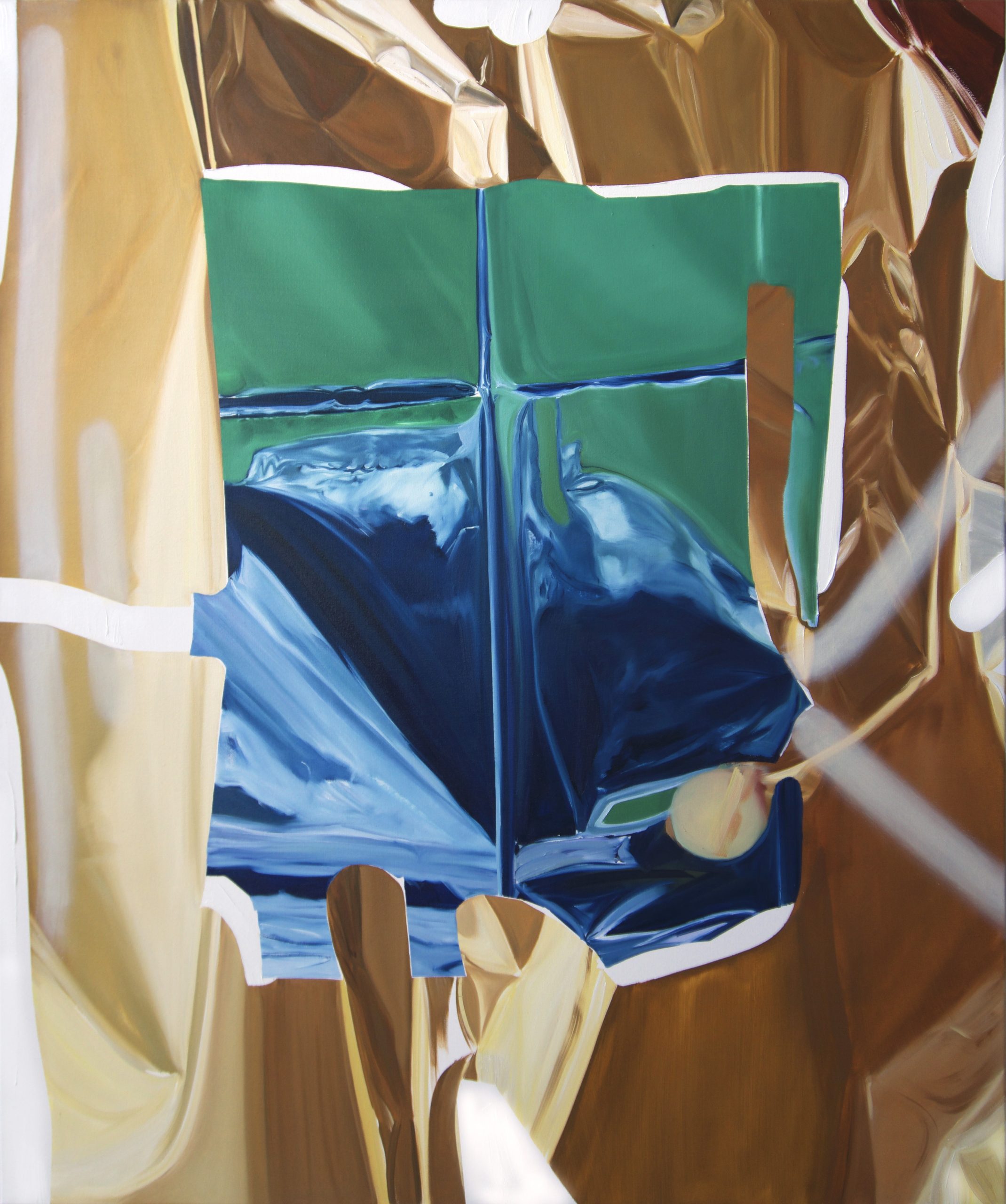
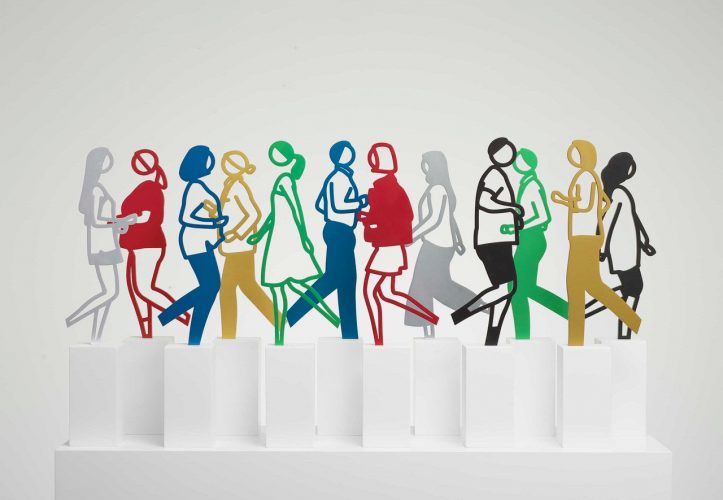 Julian Opie: Running People »
Julian Opie: Running People »
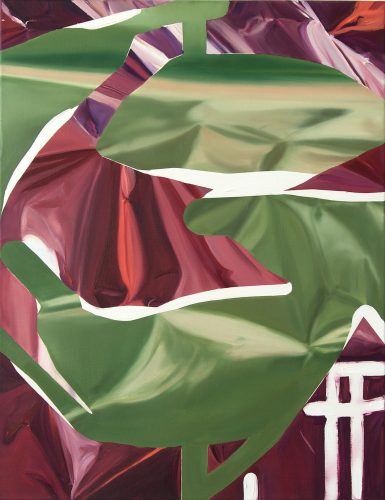 PERPETUAL »
PERPETUAL »
 BEAUTY IN FAILURE »
BEAUTY IN FAILURE »
 BREAK »
BREAK »
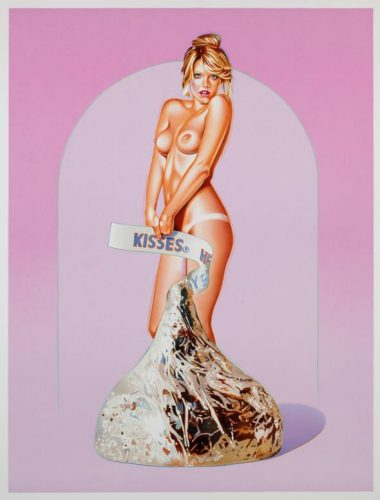 Mel Ramos: Miss Kiss »
Mel Ramos: Miss Kiss »
 Kathrin Isabell Rhomberg, FLASH »
Kathrin Isabell Rhomberg, FLASH »
 Kathrin Isabell Rhomberg, Fade out »
Kathrin Isabell Rhomberg, Fade out »
 Magdalena Heller, Freedom »
Magdalena Heller, Freedom »
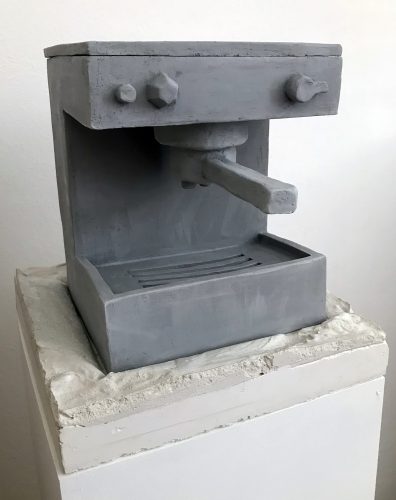 Zoe Vitzthum, Kaffeemaschine 3 »
Zoe Vitzthum, Kaffeemaschine 3 »
 Tina Graf, A Cyclist’s Alphabet »
Tina Graf, A Cyclist’s Alphabet »
 Zoe Vitzthum, Picknick 2 »
Zoe Vitzthum, Picknick 2 »
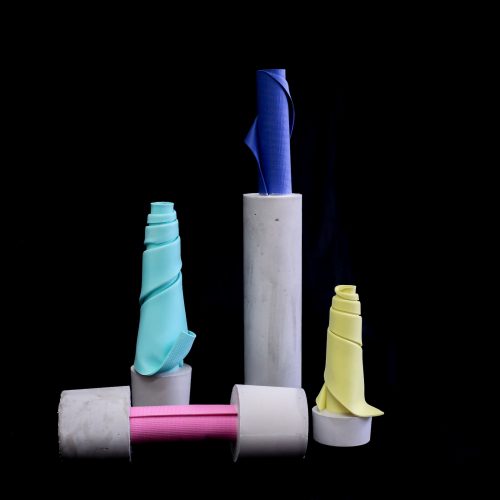 Untitled (but solid and smooth) Yoga Mats I, II, III »
Untitled (but solid and smooth) Yoga Mats I, II, III »
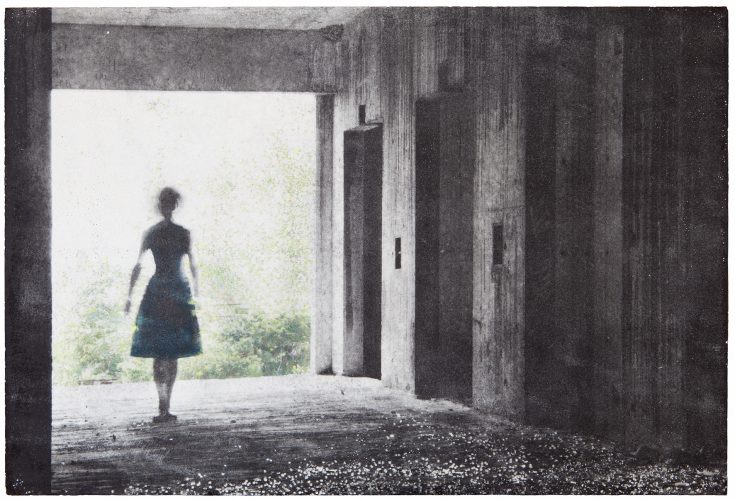 Birgit Graschopf, Untitled I, aus der Serie Walls. Interrupted »
Birgit Graschopf, Untitled I, aus der Serie Walls. Interrupted »